Roma: The Crisis of the Third Century › Enemies of Rome in the 3rd Century CE
Articles and Definitions › Contents
- Roma: The Crisis of the Third Century › Ancient History
- Enemies of Rome in the 3rd Century CE › Antique Origins
Ancient civilizations › Historical and archaeological sites
Roma: The Crisis of the Third Century › Ancient History
Definition and Origins
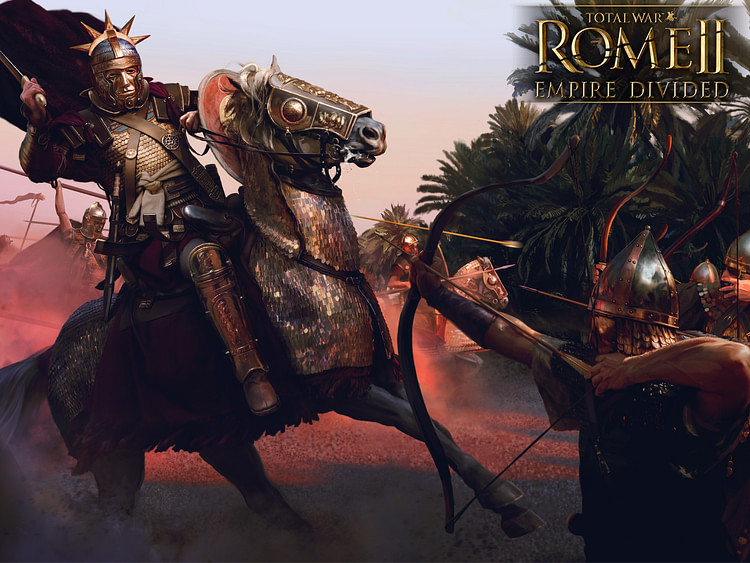
The Crisis of the Third Century (also known as the Imperial Crisis, 235-284 CE) was the period in the history of the Roman Empire during which it splintered into three separate political entities: the Gallic Empire, the Roman Empire, and the Palmyrene Empire. These breakaway empires, as well as the social turmoil and chaos which characterized the period, resulted from a number of factors: a shift in the paradigm of leadership following the assassination of the emperor Alexander Severus (222-235 CE) in 235 CE by his own troops, increased participation by the military in politics, lack of adherence to a clear policy of succession for emperors, inflation and economic depression caused by a devaluation of currency under the Severan Dynasty, increased pressure on the emperor to defend the provinces from invading tribes, the plague which heightened fears and destabilized communities, and larger armies which required more men and decreased the agricultural labor force.
After the assassination of Alexander Severus, the empire would see over 20 emperors rise and fall in the almost 50 years between 235-284 CE as compared with the 26 emperors who reigned from the time of Augustus Caesar (27 BCE - 14 CE) to Severus, 27 BCE - 235 CE, a period of over 250 years. The empire was restored through the efforts of Emperor Aurelian(270-275 CE) whose initiatives were developed further by Diocletian (284-305 CE) who is credited with ending the crisis and ensuring the future survival of the empire.
THE CRISIS BEGINS
Septimus Severus (193-211 CE), who founded the Severan Dynasty, began the policy of placating the military and buying their loyalty through increased pay and other measures. Septimus Severus raised a soldier's pay from 300 to 500 denarii annually, which was long overdue, but at the same time enlarged the armed forces in order to meet the challenges from beyond the borders which Rome now faced. In order to pay his soldiers, he debased the currency by adding less precious metal to the coinage. Although this initial debasement did not cause any economic problems, it set a precedent for later emperors to do the same.
THE EMPIRE WOULD SEE OVER 20 EMPERORS RISE & FALL IN THE ALMOST 50 YEARS BETWEEN 235-284 CE.
Further, by playing to the military, Severus weakened the traditional standing of the role of the emperor and made the position dependent on the loyalty of the army. Even though the emperor always relied on the support of the military to one degree or another, the courting of the military by the emperor became far more pronounced. Although throughout the Severan Dynasty the danger of this shift in the traditional model – in which the emperor was supreme by right of succession – posed no problem, it would become apparent after the death of the last emperor of the dynasty, Alexander.
Alexander Severus was dominated by his mother, Julia Mamaea, and grandmother, Julia Maesa, who directed him from the start of his reign as a young boy. In spite of a number of positive policies initiated, he was never able to break free from the hold of his mother and this would eventually lead to his downfall. Alexander's mother was already unpopular with the troops because of the pay-cuts she had initiated in order to save money for her own purposes. As it became more and more apparent that Alexander was only a puppet of his mother, the troops lost respect for him, and the final insult came on a campaign against the German tribes.
He followed his mother's advice to pay off his opponents for peace instead of engaging them in battle. While his mother regarded the option as the most prudent, Alexander's decision to follow her advice was seen as dishonorable and cowardly by Alexander's troops; he and his mother were both assassinated by his commanders. The Thracian soldier Maximinus Thrax(235-238 CE) then took control and became the first of the so-called “ Barracks Emperors ” who would come and go quickly throughout the crisis of the next 49 years.
THE BARRACKS EMPERORS
The “Barracks Emperors” is a term coined by later historians referring to the Roman emperors who came from and were raised to power by the army. Whereas in the past an emperor came to power through a system of succession – either as the son or adopted heir of the sitting emperor – he was now chosen by the military based on his popularity with the troops, generosity toward the military, and his ability to produce immediate and discernible results. When any of these criteria were disappointed – especially the last – he was assassinated and replaced by another.
Between the reign of Alexander Severus and that of Diocletian, there were over 20 emperors who rose and fell in fairly swift succession. These were:
Maximinus Thrax (235-238 CE) who was killed by his troops when they tired of the constant warfare, foreign and domestic, he continued plunging them into. Further, he was considered an ineffective leader in the face of famine, plague, and large-scale civil unrest.
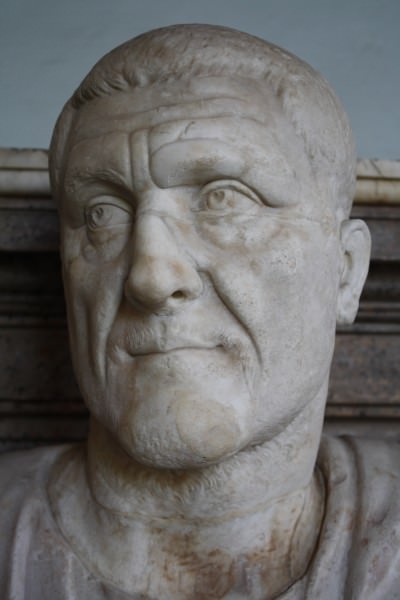
Maximinus I
Gordian I and Gordian II (238 CE, March-April) were a father and son, made emperors by the Senate, who took part in the attempt to overthrow Maximinus. Gordian II was killed in battle fighting pro-Maximinus forces, and Gordian I committed suicide upon hearing of his death.
Balbinus and Pupienus (238 CE, April-July) also opposed Maximinus but were quite unpopular with the people and were killed by the Praetorian Guard.
Gordian III (238-244 CE) co-ruled with Balbinus and Pupienus until they were assassinated and was then proclaimed emperor by the military supporters of Gordian I and Gordian II. He was assassinated, probably by his successor Philip the Arab.
Philip the Arab (244-249 CE) was the Praetorian Prefect under Gordian III and made his son, Philip II, his co-emperor. He was killed in battle by his successor Decius, and his 12-year old son and co-emperor was then murdered by the Praetorian Guard.
Decius (249-251 CE) was a regional governor raised to power by his troops. He followed Philip's policy and made his son his co-emperor in order to ensure a smooth succession, but both were killed in battle fighting the Goth coalition under the leadership of King Cniva at the Battle of Abritus in 251 CE.
Hostilian (251 CE, June-November), the younger son of Decius, died in office from the plague.
Gallus (251-253 CE), a commander under Decius, also made his son, Volusianus, co-emperor; both were assassinated by their own troops who elevated Amelianus.
Aemilianus (253 CE, August-October), a regional governor chosen by the troops, who proved disappointing and so was assassinated in favor of Valerian.
Valerian (253-260 CE) made his son Gallienus co-emperor. He was captured by the Sassanid Persians under Shapur I(240-270 CE) on campaign and died as their prisoner. According to some reports, his body was stuffed after his death and displayed in the Persian court for visiting dignitaries.
Gallienus (253-268 CE) was an effective ruler and military leader who initiated a number of important developments in the military (most notably expanding the role of the cavalry) and also culturally. Even so, he could not escape the climate of the times and was assassinated by his own troops on campaign in a conspiracy involving the future emperor Aurelian.
Claudius Gothicus (268-270 CE) who received his honorary epithet “Gothicus” following his victories over the Goths. He is said to have been reluctant to accept the position of emperor and avenged the murder of Gallienus. He showed great promise as an effective emperor but died of the plague only two years into his reign.
Quintillus (270 CE), the brother of Claudius Gothicus, came to power briefly following the latter's death but died soon after, probably assassinated by Aurelian.
Aurelian (270-275 CE) was one of the few Barracks Emperors to make a concerted effort to place the good of the people and security of the empire above his own personal ambition. He reunited the empire by defeating the Gallic and Palmyrene breakaway empires and bringing them back under Roman control and was also victorious over a number of different hostile tribes, thus securing the borders. In spite of his successes, he was assassinated by his commanders.
During the next nine years, Tacitus, Florianus, Probus, Carus, Numerian, and Carinus would rule – all following the same paradigm of elevation by the troops and, in most cases, assassination by them – until Diocletian took power. In the years all these men were fighting with each other over who would rule or should rule, the empire they sought to lead was falling apart. Since the death of Alexander Severus, the would-be emperors required larger and larger armies and more supplies and, lacking the funds to pay for these, they debased the currency again and again.
In response to the economic and social chaos of the time – and the uneven quality of leadership in dealing with a number of pressing difficulties – it is not surprising that the vast empire should split apart and leaders should arise who felt they could do better for their people without the drama and bloodshed that had become the government of Rome. In 260 CE the regional governor of Upper and Lower Germania, Postumus (260-269 CE), broke away to create the Gallic Empire comprised of Germania, Gaul, Hispania, and Britannia, and c. 270 CE Queen Zenobia of Palmyra (267-272 CE) in the east formed her own empire – the Palmyrene – which stretched from Syria down through Egypt.
THE BREAKAWAY EMPIRES
Although Postumus and Zenobia are often characterized as rebels against Rome, they were not. There is nothing in Zenobia's official actions, and little in those of Postumus' after his initial strike, which could support a definition of “open rebellion” against the state as they were wise enough to recognize that, even with Rome's problems, it could still pose a substantial threat.
Instead of confronting Rome with a new potential enemy, Postumus assured the Roman Senate and the emperor that he was acting in Rome's best interest by securing the provinces and, in the east, Zenobia followed this same policy and even made sure to issue coinage with Aurelian's image on one side and her son Vaballathus's on the other. Zenobia seems to have hoped that her son would be considered for the dubious honor of becoming the next emperor of Rome and so the popular characterization of her empire as a rebellion is untenable. Postumus, although clearly acting on his own to the point where he created his own senate and government bureaucracy, also honored Rome in his policies and courted its favor.
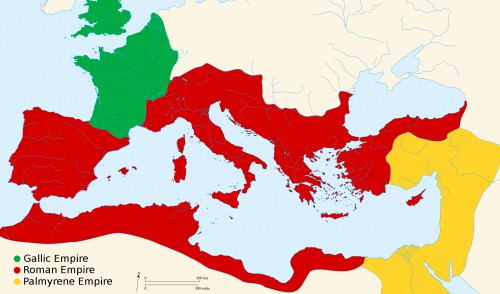
Roman Empire 271 CE
Rather than open rebellions, the Gallic and Palmyrene empires should be regarded as natural and common-sense reactions to the chaos into which the Roman Empire had degenerated. Although it seems clear from a distance that both Postumus and Zenobia were vying for power and independent sovereignty of their realms, they did so at all times under the guise of acting on Rome's behalf and in the hope of some future reward or acknowledgement from the Roman government.
For most of the period of the Crisis of the Third Century the emperors were too busy fighting each other or driving off invading forces to pay much attention to the breakaway empires on their borders. When Aurelian came to power, however, he made the reunification of the empire a priority.
AURELIAN'S RESTORATION
Lucius Domitius Aurelianus – better known as Aurelian – was a commander of the cavalry under Gallienus and a popular and able leader. He was involved in the conspiracy to assassinate Gallienus, but before he could take power, Claudius Gothicus usurped the throne, and after his death, his brother Quintillus. Aurelian most likely disposed of Quintillus and was supported by the army in his coup.
He had already proven himself an exceptional and ruthless commander and between 270-272 CE elevated his reputation with campaigns against the Vandals, Alamanni, Juthungi, and Goths – among others – securing the borders of the empire. Once this was accomplished he turned his attention east and marched on Zenobia.
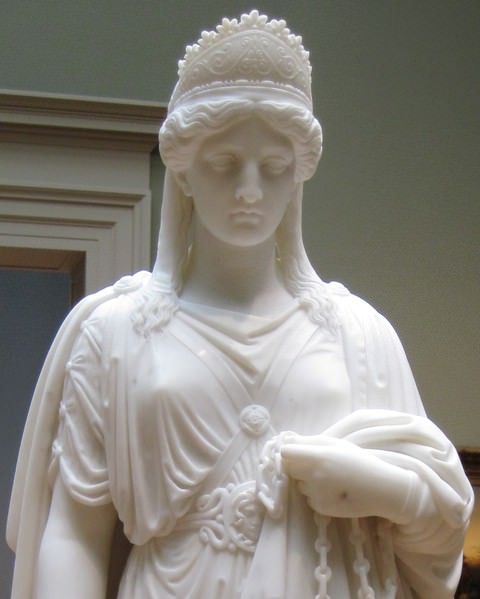
Zenobia in Chains
Aurelian was a soldier, not a politician, and so was uninterested in Zenobia's motives for taking Egypt nor in any of her actions which were allegedly done in service to Rome. Upon entering her territory, he implemented the same scorched earth policy which had worked so well against his other adversaries and destroyed every city he came to until he reached the outskirts of Tyana. This was the home-city of the famed philosopher and mystic Apollonius of Tyana, and in a dream, Apollonius appeared to Aurelian and told him to be merciful if he wished for victory. Aurelian spared the city, and word of his mercy spread quickly;the other cities in the region opened their gates to him without resistance upon his approach.
Zenobia assembled her armies under the command of her brilliant general Zabdas and met Aurelian at the Battle of Immae in 272 CE. Aurelian ordered his cavalry to engage and then retreat as though in a rout, forcing the opposing cavalry to pursue.Aurelian's strategy was to lure his opponents into a trap by tiring them out and leading them to a site of engagement of his own choosing, and this worked exactly as he had planned.
At a certain point, the Roman forces wheeled about and drove into the advancing Palmyrenes in a pincer movement which crippled their charge and killed most of them. Zenobia and Zabdas escaped the battle, regrouped, and fought again at the Battle of Emesa where Aurelian was again victorious using exactly the same strategy.
Zabdas was probably killed (he is not mentioned again), and Zenobia was taken prisoner by Aurelian. Although she is famously depicted as being paraded through the streets of Rome in golden chains, this is most likely a fiction. Aurelian would not have wanted to call any more attention to Zenobia than was necessary as it was already considered an embarrassment that he had to expend so much effort against a woman.
Once the regions of the east were restored to the empire, Aurelian marched west to subdue the area Postumus had claimed as his own. Postumus himself was dead by this time, killed by his own troops in 269 CE, and the Gallic Empire was led by Tetricus I (271-274 CE). Aurelian's reputation preceded him on his march west, and Tetricus I seems to have had little desire to meet the emperor on the field. Even so, the two armies met at the Battle of Chalons in 274 CE where Tetricus I's forces were nearly annihilated by Aurelian.
AT THE BATTLE OF CHALONS IN 274 CE TETRICUS I'S FORCES WERE NEARLY ANNIHILATED BY AURELIAN.
Much debate and speculation surround the Battle of Chalons since early reports claim that Tetricus I wrote to Aurelian before the event asking to surrender or, at least, for the emperor to spare him and his son. In the event, Tetricus I and his son were spared and Tetricus I lived out the rest of his life as an administrator, and this is seen by some as proof of Aurelian's later claims that Tetricus I betrayed his troops.
The claim makes little sense, however, as Aurelian would have been far better off sparing the entire army and simply accepting Tetricus I's surrender before battle. Although he won a decisive victory over Tetricus I, it still cost him in men and supplies, which were important resources in maintaining the empire. Further, he could have made ample use of the army Tetricus I fielded for the battle instead of slaughtering them.
A more likely reason for Tetricus I's survival is the lesson Aurelian learned on the Palmyra campaign regarding the benefit of mercy. In sparing Tetricus and his son, Aurelian showed himself a leader who did only what was necessary to restore order and who forgave, instead of punishing, transgressions.
It is probable that Aurelian thought this policy would work in his favor in the future, should any others decide to secede from the empire, but he did not live long enough to find out. He was assassinated by his commanders who were under the mistaken impression that he intended to execute and replace them.
CONCLUSION
The Imperial Crisis ended not so much with the restoration of the Roman Empire to what it had been as with a fundamental change in the most important aspects of government. Diocletian dealt firmly with every one of the aspects which had contributed to the chaos of the 50 years which preceded him. Building upon Aurelian's initiatives of securing the empire's borders and elevating the position of emperor above the common people or military, Diocletian went further in creating an aura of divinity around the position while reducing a ruler's reliance on military support.

Roman Emperor Diocletian
He decreased the power of the military by implementing a policy of defense-in-depth whereby mobile forces within the empire would reinforce stationary forces garrisoned at the border, which meant he no longer needed large standing armies in forts who might become attached to their commander or regional governor. The mobile armies also took care of another problem: the propensity for soldiers to serve in their home regions. While this policy had been considered an advantage – as one would fight for one's home more resolutely than for a stranger's – it also allowed for greater bonds forged between the men and their regional commander than between the men and the emperor.
Diocletian also issued a more stable currency and curbed the rampant inflation and, to ensure a smooth succession and a more stable government, enacted the tetrarchy (rule of four) whereby the responsibilities of governing the vast empire were divided between two separate rulers whose successors were already in place when they assumed their positions. His final solution to the problems of the empire was his famous division of the realm between the Eastern and the Western Roman Empires, which made each more manageable under the reign of their respective emperors.
The efforts of Aurelian and Diocletian would sustain the Western Roman Empire for almost 200 years and the Eastern Roman Empire (known as the Byzantine Empire ) until 1453 CE. The legacy of Rome, however, continues to the present day and has significantly affected generations of people around the world for centuries in a way it might not have if it had not survived its crisis in the 3rd century CE.
Enemies of Rome in the 3rd Century CE › Antique Origins
Ancient Civilizations
It has been said that the greatest enemy of Rome was Rome itself, and this is certainly true of the period known as the Crisis of the Third Century (also known as the Imperial Crisis, 235-284 CE). During this time of almost 50 years, over 20 different emperors ruled in quick succession; a statistic which becomes more alarming when compared with the 26 who reigned between 27 BCE and 235 CE. These rulers – known as the “ barracks emperors ” because they were supported by and largely came from the army – were generally motivated by their own ambition and personal interests and so served themselves before the interests of the state.
Although a few of these emperors proved themselves worthy of rule, they could not escape the climate of the times which rewarded direct and discernible results on the part of leadership, even if those results were not always in the people's best interest. The Crisis of the Third Century began when the emperor Alexander Severus (222-235 CE) decided to pay the German tribes for peace instead of meeting them in battle and his troops, considering this course dishonorable, killed him.Such an action against a sitting emperor would have been considered unthinkable in the past but became so commonplace during this period that elevating a man to the position of emperor was almost a death sentence.
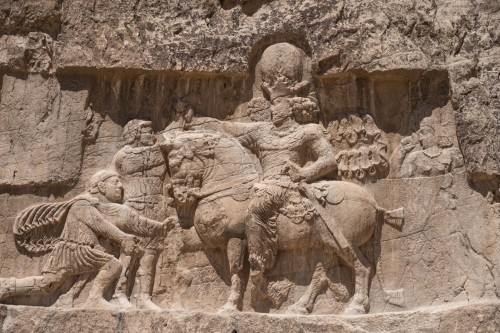
Valerian Defeated by Shapur I
After the death of Alexander Severus, a new paradigm for a ruler became standard – of emperors relying on the goodwill of the military in general and their own commands specifically – and this would characterize the whole of the period. Emperors could no longer rule according to their vision of the best version of Rome; they now had to make policy with their popularity among the army in mind.
At this same time, when Rome was, for the most part, lacking strong leadership, suffering plague, inflation, and other domestic difficulties, external threats presented themselves in the form of so-called “barbarian tribes” and others who either sought to topple Rome or simply remove themselves from the confusion and disorder which had come to characterize the Roman Empire. Chief among Rome's enemies during this period were:
- King Cniva of the Goths (and later King Cannabaudes, claimed by some scholars as the same man c. 251-270? CE)
- King Shapur I (240-270 CE) of the Sassanid Persians as well as his son, Hormizd I (270 - c. 273)
- Postumus of the Gallic Empire (260-269 CE) and those who ruled after him ( Marius, Victorinus, Domitianus, and Tetricus I), most notably Tetricus I (271-274 CE)
- Zenobia of the Palmyrene Empire (267-272 CE) and her Egyptian general Zabdas (c. 267- c. 273 CE)
All of these rulers played a part in the crisis which beset Rome in the 3rd century CE. Cniva was the first barbarian king to kill a sitting emperor in battle; Shapur I was the first to capture one; Postumus was a Roman governor who decided he could do better creating his own empire, and Queen Zenobia of Palmyra did the same.
From 235 CE until Emperor Aurelian came to power in 270 CE there were very few Roman leaders capable of meeting these threats. At war with each other, and surrounded by pressing challenges, most of the emperors of the 3rd century CE failed the state and the people they were supposed to protect and lead.
Many of the problems they faced were not at all new; what made them seem so was the inability of the emperor to resolve any of them. The vast scope of the empire at this time, which made the old model of rule by one emperor obsolete, and an inability to imagine one more effective and practical, left Rome in a position of weakness, where any man promising results was elevated at the expense – and life – of his predecessor.
Due to the various emperors' failings – as well as other serious problems with the bureaucracy and general function of the Roman state – adversaries like Cniva and Shapur I, as well as former friends like Postumus and Zenobia – were able to gain significant advantages and, in the case of the latter two, even form their own empires.
CNIVA
Cniva (also given as Kniva) was the king of the Goths who defeated the emperor Decius at the Battle of Abritus in 251 CE.Scholar Michael Grant observes that “in Kniva the Goths had a leader of unprecedented caliber, whose large-scale strategy created the gravest perils the empire had yet undergone” (31). Cniva may have learned his strategies through service in the Roman army or may have simply been a careful observer of his adversary. Little is known of him outside of his campaign in 251 CE in which he lay siege to the Roman city of Nicopolis and successfully took Philipopolis, killing over one hundred thousand Roman citizens and enslaving survivors.
CNIVA MAY HAVE LEARNED HIS STRATEGIES THROUGH SERVICE IN THE ROMAN ARMY OR MAY HAVE SIMPLY BEEN A CAREFUL OBSERVER OF HIS ADVERSARY.
Emperor Decius was driven from the field by Cniva once and, when he regrouped and attacked again, Cniva had all the advantages. Cniva knew the terrain, was able to position his troops effectively, and lured Decius and his army into the marshy ground of a swamp. The Roman formations were rendered ineffective on this ground, and Cniva slaughtered most of them, including Decius and his son. Afterwards, the Romans had no choice but to allow Cniva to go on his way with his many prisoners and all the treasures of Philipopolis.
After the Battle of Abritus, Cniva is not heard from again but is associated with the later King Cannabaudes (also given as Cannabas, c. 270 CE) of the Goths, who was killed in battle, along with 5,000 of his troops, in an engagement with Aurelian (270-275 CE) in c. 270 CE. It would not be impossible for the same man to have led the Goths in 251 and in 270 CE. The Battle of Naissus (268 or 269 CE) pit the emperor Claudius II against a Gothic force led by an unnamed king who could have been Cniva.
Whether Cniva was the same leader as Cannabaudes, his ability to strategize and his skills in warfare were not handed down to the next generation. The identification of Cniva with Cannabaudes makes sense in that, according to reports, the Gothic king was killed along with 5,000 of his men and the secrets of his success would thus have been lost with those soldiers who had planned and fought with him. After Cniva's successes, there are no other reports of Goths taking Roman cities by siege nor in any other manner. The later Goth commander Fritigern (c. 380 CE) famously avoided engagements involving cities, preferring guerilla warfare tactics.
SHAPUR I & HORMIZD I
In the east, however, there was another ruler who had no such problem: Shapur I. Shapur I was the son of Ardashir (224-242 CE), the founder of the Sassanian dynasty, who elevated Shapur I to co-ruler and instructed him in warfare. Although Shapur I was an able administrator and ruler whose reign is recorded in glowing phrases by everyone except Roman writers, he thought of himself as a warrior-king first and tried to embody this ideal.
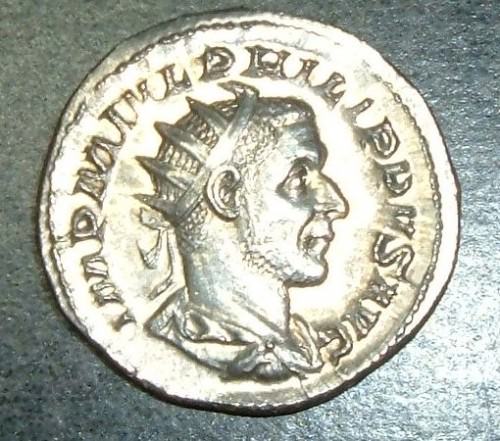
Roman Coin of Philip the Arab
Shapur I continued his father's policies of aggression toward Rome and took Roman fortresses and cities in Mesopotamiaearly in his reign. He was met in battle by the emperor Gordian III, who was only 17 years old at the time, and who relied heavily on the advice and strategies of his father-in-law and Praetorian Prefect, Gaius Timesitheus. Shapur I was driven back by the Roman forces at first, but when Timesitheus died of the plague the situation reversed; Gordian III had little military experience and lacked the skill to counter Shapur I's strategies. When Gordian III failed to meet the expectations of his troops, they killed him, and he was replaced by Philip the Arab.
Philip quickly made peace with Shapur I and paid him 500,000 denars as part of the treaty. Philip ceded the disputed territory of Armenia to Shapur I, who sent his son Hormizd I (who had fought with him against the Romans) to rule it. Hormizd I ruled well as viceroy of Armenia, maintaining his father's policies regarding freedom of religion and establishing a peaceful and prosperous reign. An able administrator, as well as a courageous and skilled warrior, Hormizd I was widely respected for his initiatives in the short time he ruled over Armenia. Fairly quickly, however, Philip discarded the treaty and reclaimed the region;this action obviously broke the peace and plunged the region back into war.
Shapur I ravaged through Mesopotamia and conquered the Roman province of Syria, taking the city of Antioch. Hormizd I accompanied his father on this campaign and held important positions of command and administration throughout the course of it. The emperor Valerian marched against Shapur I and Hormizd I and drove them from the city, but in the course of pursuit, the plague struck the Roman army and they had to withdraw back into Antioch.
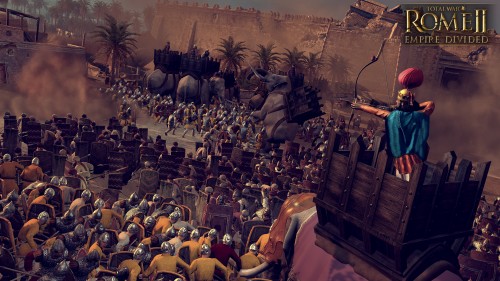
Hormizd I in Battle
Shapur I and Hormizd I lay siege to the city and Valerian had no choice but to seek terms. He and his senior staff went out to meet the Persian leaders to discuss the city's surrender but were taken captive instead and the city fell to the Sassanid forces.According to legend, Shapur I used Valerian as a footstool to mount his horse and, when the emperor died, had his body stuffed with straw and put on display.
Thus far, Shapur I's instincts, skill, and simple good fortune had brought him close to realizing his ambition of conquering all the eastern Roman provinces, but at this point, he made a grave mistake. Odaenthus, the Roman governor of the Syrian city of Palmyra, wrote Shapur I an offer of alliance; Shapur I rejected this in the clearest terms possible.
In the chaos which characterized the 3rd century in Rome, Odaenthus was probably hoping for some semblance of order for his home region and Shapur I would have seemed a better choice than any of the Roman emperors. Shapur I rebuffed the offer, stating that Odaenthus was nowhere near his equal and should look forward to becoming his vassal. Odaenthus, insulted and enraged, then mobilized a force and drove Shapur I out of Roman territory.
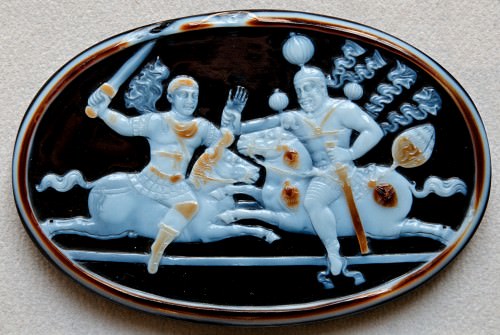
Defeat of Valerian by Shapur
Shapur I's victory over Valerian was among his last. Odaenthus defeated the Sassanid Persians in every encounter. Regarding this, scholar Philip Matyszak observes how Shapur I “discovered that a well-led Roman army was still the world's finest fighting force” (239). After Odaenthus' campaigns, Shapur I lost any gains he had made and retreated back to his own borders. The rest of his reign focused chiefly on domestic issues while keeping a wary peace with Rome. When he died, he was succeeded by Hormizd I who continued his policies, resulting in a kind of cold war between the Sassanids and Rome. Hormizd I made no overt hostile gestures toward Rome but certainly offered no sign of cordial relations between the two states.
Odaenthus, having beaten back the Persian threat, was rewarded by Emperor Gallienus with greater power and authority as governor of all of Rome's eastern provinces. He was killed while hunting in 267/268 CE, and his wife, Queen Zenobia, took over as regent for their young son Vaballathus. Soon, however, it would be clear that Zenobia had grander plans than simply place-holding for another.
ZENOBIA & POSTUMUS
Zenobia inherited Odaenthus' territory as well as his army and their brilliant Egyptian general Zabdas. Although careful not to antagonize the Roman emperor Gallienus, or show herself officially in any light other than as an acceptable Roman regent, she expanded her territory and entered into negotiations without Rome's consent. In every way but official title, she reigned as supreme empress over the eastern regions of what had been the Roman Empire.
One of her most impressive moves was against Roman Egypt. Egypt was Rome's breadbasket, supplying the empire with grain, and was among its most prized provinces. Zenobia sent Zabdas to Egypt to put down a revolt – which she most likely instigated to give herself just cause – and then annexed the country. Officially, she could claim that this action was in Rome's best interest and she had only been keeping the peace, but she acted without consulting the emperor, and her annexation of Egypt certainly elevated her reputation at Rome's expense.

Zenobia Denarius
At the same time Zenobia was consolidating her power in the east, another former friend of Rome, and a sitting provincial governor, did the same in the west. Postumus was the Roman governor of Upper and Lower Germany under the co-rule of Gallienus and Valerian. Postumus had already defended the provinces in the west from barbarian incursions and felt he needed more power and authority to perform his duties more efficiently. Valerian was fighting in the east and Gallienus was busy with his own campaigns in the west and north. Frustrated by the inability to do what he felt he should, Postumus marched on the Roman city of Cologne, where the son and heir of Gallienus had been sent for his own safety, and killed him as well as his bodyguard.
Postumus then declared himself emperor of his own realm – the Gallic Empire – which comprised Germany, Gaul, Hispania, and Britannia. He set up his own senate, mobilized his own troops, and entered into his own negotiations but insisted, all the while, that he was acting in Rome's interests. After Valerian was captured by Shapur I, Postumus grew bolder and Gallienus made time from his campaigns to launch an attack on the Gallic Empire but was driven back. Gallienus was killed by his own troops shortly after this event, and Claudius Gothicus and then his brother Quintillus were emperor before Aurelian took power.
AURELIAN'S RESTORATION & TETRICUS I
Aurelian was a soldier, not a politician, and had neither the time nor the patience for inquiries into why Zenobia or Postumus had acted as they did. As soon as he had defeated the Goths (killing Cannabaudes/Cniva), as well as the Vandals, Jugunthi, Alammani, and others, he marched on the Palmyrene Empire. At the Battle of Immae in 272 CE he had his cavalry engage and then feign retreat in a rout, and when the Palmyrene cavalry pursued, he led them into a trap in which his forces wheeled about and drove into the opposing forces, killing most of them and scattering the rest.
Immae was a stunning victory for Aurelian, but Zenobia and Zabdas escaped and reformed their troops against him. At the Battle of Emessa, using the same tactic he had at Immae, Aurelian defeated Zenobia's forces and Zabdas was probably killed;he is not mentioned in any later reports. Zenobia, after trying to escape again, was caught and brought to Rome. Aurelian showed mercy to Palmyra and many of the ringleaders of the Palmyrene Empire, but when the city rebelled a second time, he hurriedly returned and destroyed it, massacring the inhabitants.

Queen Zenobia before Emperor Aurelianus
After taking care of Palmyra, Aurelian marched west for the Gallic Empire. Postumus was dead by this time, killed by his own troops in 269 CE when he tried to prevent them from sacking the Roman city of Mainz which had rebelled. The position of emperor had passed to others (Marius, Victorinus, and Domitianus) before Tetricus I was nominated by Victorinus' mother.
Postumus had been an able administrator and commander, but Marius, Victorinus, and Domitianus were much weaker and far less effective. Marius was a blacksmith and possibly a foot soldier who was chosen by the troops at Mainz, most likely because he led the opposition to Postumus' command to spare the city. He was only in power briefly before being assassinated. Victorinus, a Praetorian tribune, then became emperor and although he was an able military leader, he could not control his lust for women. He was murdered after trying to seduce the wife of one of his commanders. The usurper Domitianus then seized power but was overthrown by Tetricus I. Tetricus I is considered the only true successor to Postumus owing to his personal character and his strong military and administrative skills.
After the assassination of Postumus, Hispania left the Gallic Empire and declared their allegiance to Rome. At this same time, more German tribes rebelled against the Gallic rule from Trier. Victorinus had attempted to control these revolts with more or less success but was not able to restore stability to the region. This was the volatile situation Tetricus I inherited when he became emperor. He made his son (also named Tetricus) his co-emperor in order to share the burden of responsibility for the military and government administration and then went to work to restore the empire. He put down the rebellions and stabilized Germania and Gaul but any further initiatives were halted when word came that Aurelian had defeated Zenobia and was coming for the Gallic Empire next.

Tetricus I
When Tetricus I heard that Aurelian was marching against him, he allegedly sent him a letter asking the emperor to save him and his son and offering to surrender. Much debate has gone on surrounding this allegation, and it is thought by some scholars to be a later invention of Aurelian to discredit Tetricus I by accusing him of betraying his troops to save himself. It is clear that Tetricus I was an able leader and was popular among his troops; it seems unlikely he would have brokered a deal to surrender before battle while still committing his army to the field.
Whether Tetricus I made such a deal with Aurelian or not, the Roman forces slaughtered those of the Gallic Empire at the Battle of Chalons in 274 CE, and Tetricus I and his son were taken captive. They were spared, as were other officials in the Gallic government, which gave rise to the rumors that he had betrayed his troops. Tetricus I was given an administrative office in a Roman province (as was his son) and, just like Zenobia, lived comfortably for the rest of his life. Aurelian had now restored the empire but would not live much longer to enjoy his accomplishments.
Aurelian had defeated the Goths as well as a number of other invading tribes, kept the Persians at bay, brought both the Gallic and Palmyrene empires back into the Roman fold, and reformed abuses of the mint at Rome, thus stabilizing the currency.Aurelian's reign shows every indication of continuing on this trajectory toward reform and restoration, but it was cut short by those he mistakenly believed he could trust. In keeping with the spirit of the times, even a great emperor like Aurelian could not finally triumph over his own people, and he was killed by his commanders who mistakenly believed he was planning to execute them.
ROME'S GREATEST ENEMY
Even though Rome had many enemies throughout the 3rd century CE, the greatest threat to its continued existence was itself.The problems Rome faced at this time, as noted earlier, were not new – there were invasions and internal difficulties decades and even centuries earlier – what was new was Rome's inability to deal with these issues. A lack of patience and policy defined the period of 3rd-century CE Rome, and many decisions were made based on fear rather than hope.
This climate invited problems from external sources like the Goths and the Sassanid Persians and others and encouraged leaders like Zenobia and Postumus to create their own empires, but these kinds of situations would have once been dealt with decisively and swiftly. In the 3rd century CE, they were handled inefficiently or not at all until the reign of Aurelian.
It is in this way that Rome was its own greatest enemy during this period. By the time of the 3rd century CE the corruption of the state, the decline in a moral and social paradigm once provided by the pagan religion, and the migration of other peoples across and around the borders of the empire all led to imperial decisions made in the interests of immediate and popular results. The external enemies of Rome were certainly a very real threat, but on a certain level, their victories were simply manifestations of the decay of what was once the Roman Empire.
LICENSE:
Article based on information obtained from these sources:with permission from the Website Ancient History Encyclopedia
Content is available under License Creative Commons: Attribution-NonCommercial-ShareAlike 3.0 Unported. CC-BY-NC-SA License